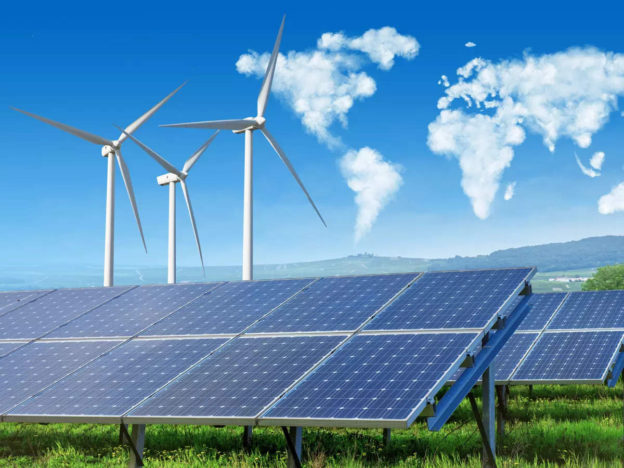-
Renewable capacity will meet 35% of global power generation by 2025, according to the International Energy Agency (IEA).
-
The organization also says electricity demand is forecast to grow by 3% a year over the next three years compared to 2022, with a third of global consumption in China.
-
The Energy Information Administration predicts that solar power will make up more than half of new capacity in the US in 2023.
A significant rise in CO2 emissions from the global power sector is unlikely over the next few years, thanks to the rapid rise in renewable energy capacity.
That’s one of the key findings from the International Energy Agency’s (IEA) Electricity Market Report 2023. It predicts that renewable energy sources such as solar and wind power, together with nuclear, will on average meet more than 90% of the increase in global demand by 2025.
“The good news is that renewables and nuclear power are growing quickly enough to meet almost all this additional appetite, suggesting we are close to a tipping point for power sector emissions,” says IEA Executive Director Fatih Birol.
“Governments now need to enable low-emissions sources to grow even faster and drive down emissions so that the world can ensure secure electricity supplies while reaching climate goals,” he warns.
Global electricity demand grows
The IEA forecasts that global electricity demand is expected to rise by 3% per year over the 2023-2025 period, compared with the 2022 growth rate.
More than 70% of this is expected to come from China, Southeast Asia and India, the report says. However, advanced economies are looking to generate more electricity, as well as reduce reliance on fossil fuels in sectors like heating and transportation.
“By 2025, for the first time in history, Asia will account for half of the world’s electricity consumption and one-third of global electricity will be consumed in China… over the next three years the electricity consumption added each year is roughly equivalent to that of the United Kingdom and Germany combined,” the report says.

Asia will account for half the world’s electricity consumption by 2025. Image: IEA.
A renewables boost
Renewables’ share of the power generation mix worldwide is set to rise from 29% to 35% by 2025, according to the IEA. The share of coal and gas-fired generation will consequently fall, it says. And so will global power-sector CO2 emissions, which are predicted to plateau through to 2025, despite reaching an all-time high in 2022 of about 13.2Gt CO2.
China will account for close to half of the additional renewable generation, followed by the European Union with 15%, the IEA says. This growth is being fuelled by increased government spending on renewables as part of economic recovery plans, the report explains. In the US, alone, the Inflation Reduction Act will provide $370 billion in clean energy investments.
Nuclear output is expected to grow on average by around 3.6% a year. This will come from the anticipated recovery in nuclear generation in France, as scheduled maintenance is completed. New plants will also come online, mainly in Asia, the report says.

Renewable energy growth will reduce fossil fuel electricity generation. Image: IEA.
Climate crisis puts focus on energy security
Both the supply and demand of electricity is becoming more and more affected by the climate crisis. In 2022, Europe saw its worst drought in 500 years, China and India were hit by severe heatwaves and the US experienced damaging winter storms.
“The impact of weather events on electricity demand will intensify due to the increased electrification of heating, while the share of weather-dependent renewables will continue to grow in the generation mix. In such a world, increasing the flexibility of the power systems while ensuring security of supply and resilience will be crucial,” the IEA warns.
This view is reflected in the World Economic Forum’s Fostering Effective Energy Transition 2022 Edition report, which explains that diversifying the energy mix with a range of low-carbon sources can strengthen energy security.
“Renewable sources are mature and available for accelerated deployment, allowing countries to build more diversified, reliable and sustainable energy systems,” it says.
https://www.weforum.org/agenda/2023/03/electricity-generation-renewables-power-iea/





